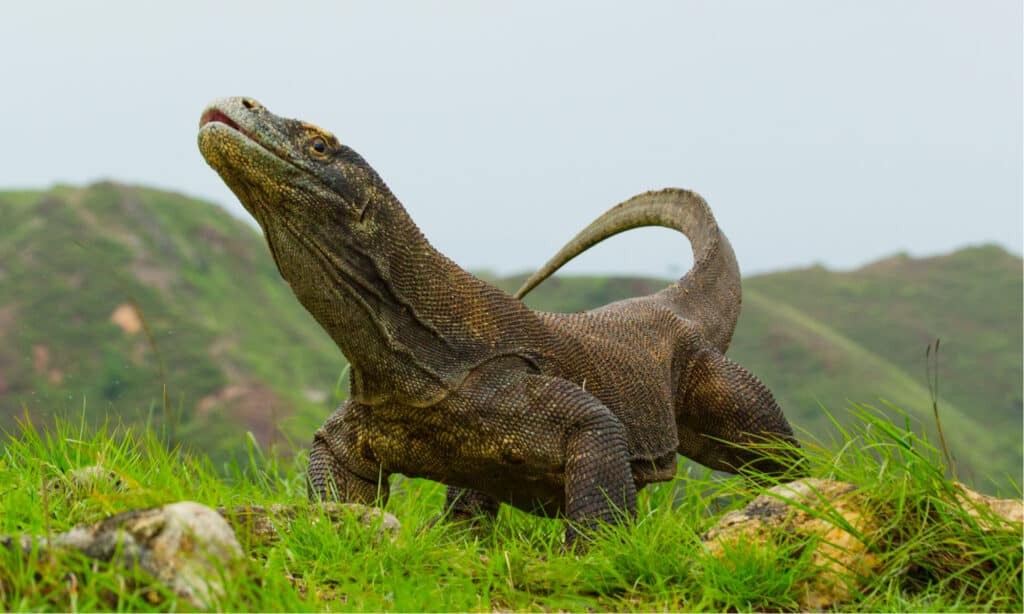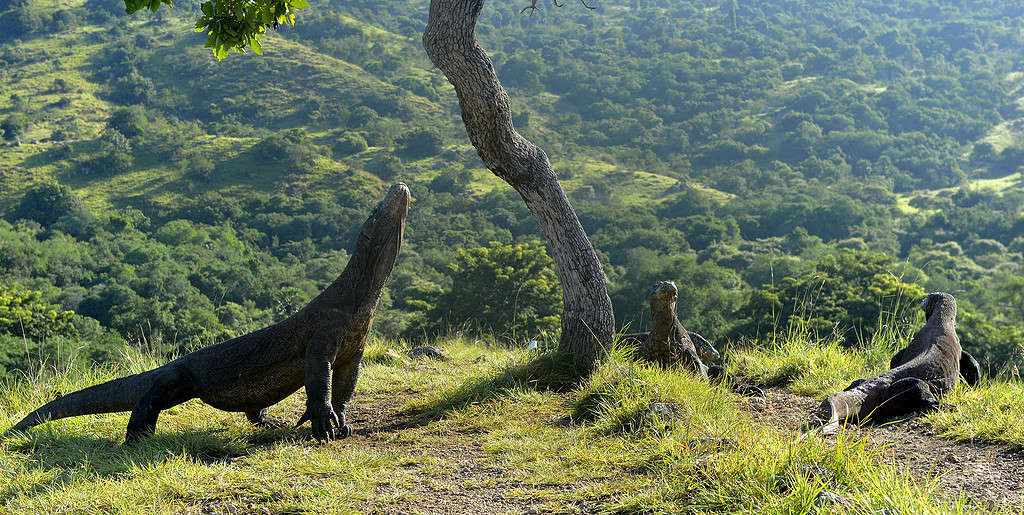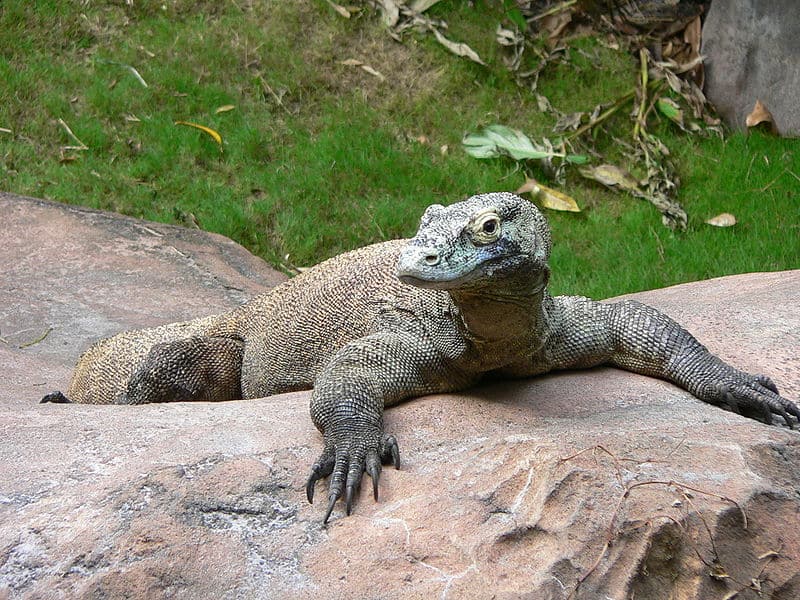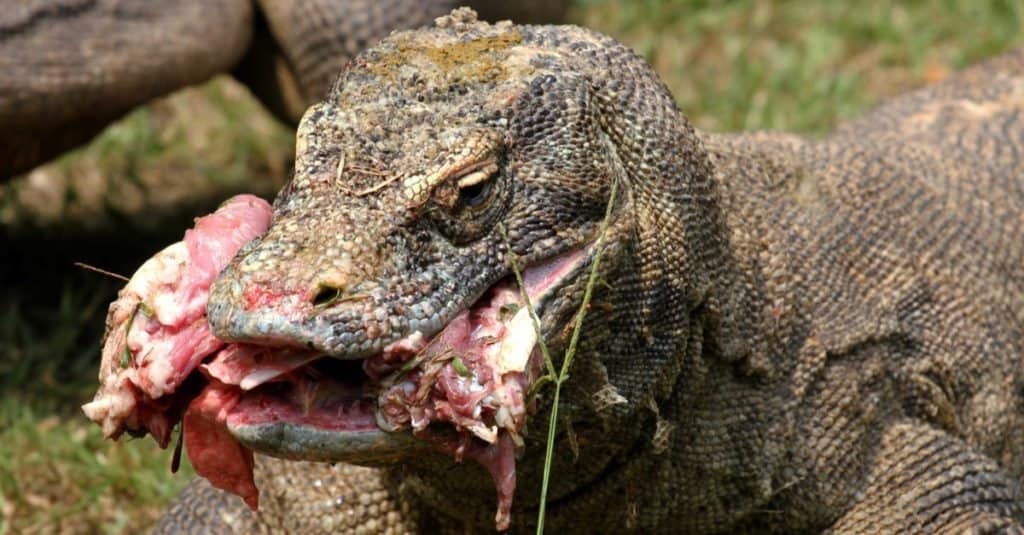Continue reading for our analysis...

Komodo dragons are ancient beasts that constantly leave humans in awe. A YouTube channel by the name of Komodo Indonesia Channel has a plethora of incredible footage showing these animals in their natural habitats.
In one of these videos that we’ve included below, a Komodo dragon spots a massive fruit bat hanging on a tree limb. Like a hungry teenager, a Komodo dragon will eat just about anything!
Goats, swine, deer, and smaller Komodo dragons are all devoured by large mature dragons. Horses and bison have been known to be killed by them as well, despite the obvious size difference.
In the video, the Komodo dragon attempts several times to jump high enough to reach the bat. Komodo dragons are notorious for jumping, especially while attempting to catch prey or eat.

Komodo dragons can run for brief distances at velocities of up to 12 miles per hour, are excellent swimmers, and can use their razor-sharp claws to climb trees.
©GUDKOV ANDREY/Shutterstock.com
In addition, these animals can run for brief distances at velocities of up to 12 miles per hour and are excellent swimmers. Did you know Komodo dragons can also use their razor-sharp claws to climb trees?
This only works when they’re young, as these critters become too heavy to lift their own weight once they’re fully grown. This comes as a life-saving trait for the lone fruit bat.
Where Exactly Do Komodo Dragons Live?

The primary habitat of the Komodo dragons is the Komodo National Park.
©Sergey Uryadnikov/Shutterstock.com
Komodo dragons are native to the Indonesian islands of Komodo, Rinca, Flores, Gili Motang, and Padar. These islands are part of the Lesser Sunda archipelago in Southeast Asia. The primary habitat of the Komodo dragons is the Komodo National Park, which encompasses these islands. The unique geographical location and specific ecosystems found on these islands provide a suitable environment for the survival and existence of the Komodo dragons.
A Lucky Getaway
As you can see in the video below, one attempt after another, the dragon gets mighty close to the bat. At one point, it looks like the animal nearly gets a bite out of the hanging creature. There’s a hilarious comment on the upload that truly puts things into perspective.
It reads, “I love how that bat is just sitting like he’s saying “you know I can fly, right?” Throughout the video, the bat truly looks unbothered when at any moment, it could be the Komodo dragon’s next meal.

Komodo Dragon (Varanus komodoensis) at the Louisville Zoo
The Komodo makes excellent utilization of the food it consumes. They consume almost every bit of their prey and nearly all of the nutrients from it. So they don’t require frequent feeding. It seems that every month or so, the dragons in the wild will eat all of their food for that month in one sitting.
A Komodo dragon’s jaws and flexible joints in its skull enable it to expand its lower jaw exceptionally widely in order to swallow large sizes of meat. It can quickly swallow large amounts of food with the help of the muscles in its neck and mouth as well.
These creatures can reach 200 pounds in weight! As much as 80% of its body weight can be consumed in one sitting thanks to the stomach’s ability to expand! Check out this lucky getaway by a huge fruit bat in the video below!
How Large Do Komodo Dragons Get?

Komodo Dragon males are larger than females.
The Komodo dragon holds the distinction of being the world’s largest extant lizard. These untamed creatures usually tip the scales at around 154 pounds. However, the most substantial confirmed individual measured an impressive 10.3 feet in length and carried a weight of 366 pounds.
Generally, males outsize and outweigh females, appearing more robust and substantial in comparison.
Do Komodo Dragons Normally Eat Bats?

Because they are carnivores, Komodo dragons will eat any meat they can get ahold of.
©Yudi S/Shutterstock.com
Komodo Dragons are the largest living lizards in the world, native to the Indonesian islands of Komodo, Rinca, Flores, Gili Motang, and Padar. They are carnivorous predators and are known to hunt a wide variety of prey, including mammals, birds, and other reptiles.
The typical diet of a Komodo dragon consists mainly of carrion, which they scavenge from the forest floor, as well as larger mammals such as wild boar and goats. They are also known to hunt and consume smaller animals, such as birds and bats, although this is not a common part of their diet.
Komodo dragons typically hunt in the early morning or late afternoon, using their excellent sense of smell to locate prey. They are ambush predators and will wait in an area until prey comes within range, at which point they will launch a surprise attack. They are also known to use their powerful tails to knock down their prey before finishing it off with their sharp teeth.
Komodo dragons are solitary creatures and usually only come together during mating season. As such, they have developed a number of hunting strategies to ensure their success, such as stalking, chasing, and using their powerful sense of smell.
Thank you for reading! Have some feedback for us? Contact the AZ Animals editorial team.






